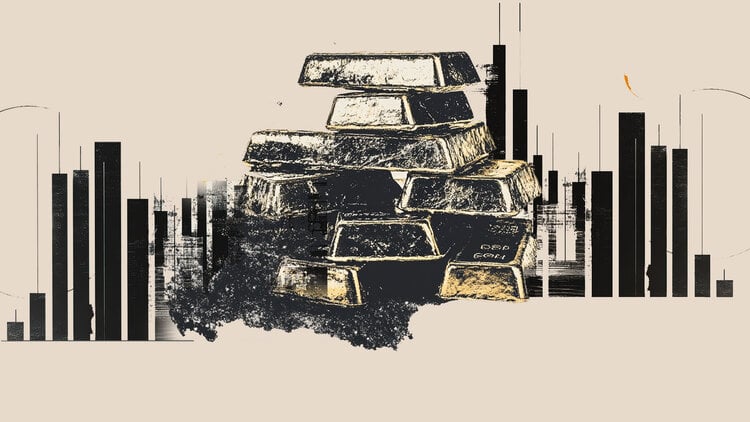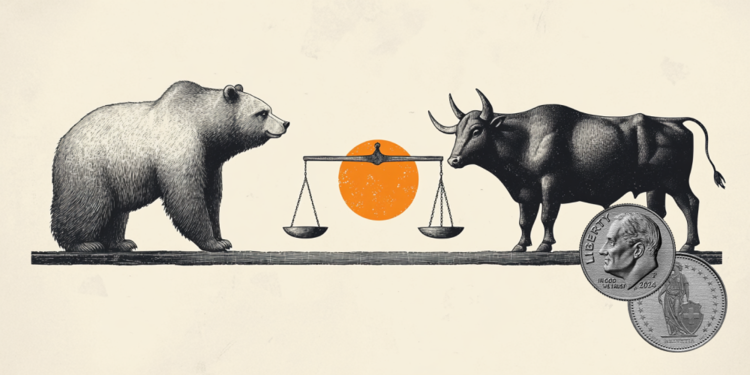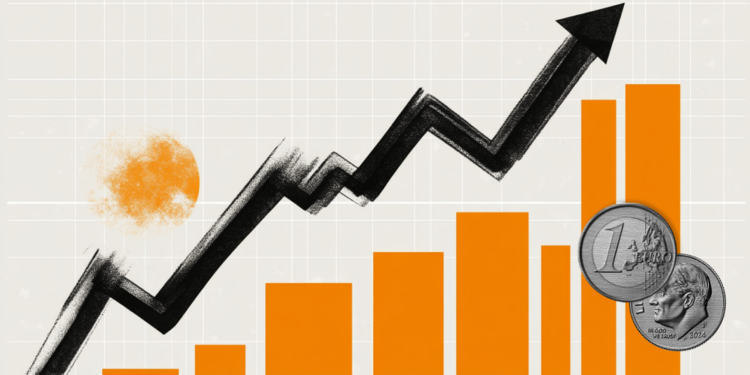Inflation in the US, measured by the variation of the Personal Consumption Expenditure Price Index (PCE), dropped to 2.3% per year from 2.5% in February, the US Economic Analysis Office (BEA) reported on Wednesday. This reading was above the market expectation of 2.2%
The Personal Consumption Expenditure Index (PCE), which excludes volatile food and energy prices, rose 2.6% in the same period, lowering the 3% increase reported in February and in line with the estimates of analysts. The Personal Consumption Expenditure Index (PCE) remained unchanged in monthly terms.
Other details of the report showed that personal income and personal spending grew by 0.5% and 0.7%, respectively, in monthly terms in March. Both figures exceeded investor expectations.
Market reaction to PCE inflation data
The dollar index remains firm after the PCE inflation report and it is observed that it rises 0.35% in the day at 99.52.
American dollar today
The lower table shows the percentage of US dollar change (USD) compared to the main coins today. The US dollar was the strongest currency against pound sterling.
| USD | EUR | GBP | JPY | CAD | Aud | NZD | CHF | |
|---|---|---|---|---|---|---|---|---|
| USD | 0.26% | 0.72% | 0.31% | 0.10% | 0.38% | 0.49% | -0.10% | |
| EUR | -0.26% | 0.47% | 0.03% | -0.16% | 0.12% | 0.24% | -0.34% | |
| GBP | -0.72% | -0.47% | -0.44% | -0.62% | -0.33% | -0.23% | -0.82% | |
| JPY | -0.31% | -0.03% | 0.44% | -0.22% | 0.07% | 0.23% | -0.39% | |
| CAD | -0.10% | 0.16% | 0.62% | 0.22% | 0.29% | 0.39% | -0.18% | |
| Aud | -0.38% | -0.12% | 0.33% | -0.07% | -0.29% | 0.10% | -0.48% | |
| NZD | -0.49% | -0.24% | 0.23% | -0.23% | -0.39% | -0.10% | -0.58% | |
| CHF | 0.10% | 0.34% | 0.82% | 0.39% | 0.18% | 0.48% | 0.58% |
The heat map shows the percentage changes of the main currencies. The base currency is selected from the left column, while the contribution currency is selected in the upper row. For example, if you choose the US dollar of the left column and move along the horizontal line to the Japanese yen, the percentage change shown in the box will represent the USD (base)/JPY (quotation).
FAQS inflation
Inflation measures the rise in prices of a representative basket of goods and services. General inflation is often expressed as an intermennsual and interannual percentage variation. The underlying inflation excludes more volatile elements, such as food and fuel, which can fluctuate due to geopolitical and seasonal factors. The underlying inflation is the figure on which economists focus and is the objective level of central banks, which have the mandate of maintaining inflation at a manageable level, usually around 2%.
The consumer price index (CPI) measures the variation in the prices of a basket of goods and services over a period of time. It is usually expressed as an intermennsual and interannual variation. The underlying IPC is the objective of the central banks, since it excludes the volatility of food and fuels. When the underlying IPC exceeds 2%, interest rates usually rise, and vice versa when it falls below 2%. Since higher interest rates are positive for a currency, higher inflation usually translates into a stronger currency. The opposite occurs when inflation falls.
Although it may seem contrary to intuition, high inflation in a country highlights the value of its currency and vice versa in the case of lower inflation. This is because the Central Bank will normally raise interest rates to combat the greatest inflation, which attracts more world capital tickets of investors looking for a lucrative place to park their money.
Formerly, gold was the asset that investors resorted to high inflation because it preserved their value, and although investors often continue to buy gold due to their refuge properties in times of extreme agitation in the markets, this is not the case most of the time. This is because when inflation is high, central banks upload interest rates to combat it. Higher interest rates are negative for gold because they increase the opportunity cost to keep gold in front of an asset that earns interest or place money in a cash deposit account. On the contrary, lower inflation tends to be positive for gold, since it reduces interest rates, making bright metal a more viable investment alternative.
Source: Fx Street
I am Joshua Winder, a senior-level journalist and editor at World Stock Market. I specialize in covering news related to the stock market and economic trends. With more than 8 years of experience in this field, I have become an expert in financial reporting.






.jpeg)
